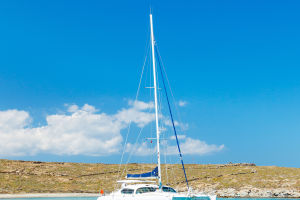In the past, it was very "fashionable" to be able to go to a coffee shop to drink coffee. With the development of the times, drinking coffee, like drinking tea and drinking mineral water, has become a part of many people's lives.
Many students, housewives and office workers like to drink coffee, and drinking a cup of coffee every day has become a habit. Here are some of the top coffees in the world.
1. Kona, Hawaii
Hawaii has 5 volcanoes. 2 of them (Hoaralai and Mauna Loa) provide a particularly suitable soil for coffee.
Especially on the west side of the island where the climate is dry (the rainfall is only about a few hundred millimeters per year), the average temperature is 25°C, and the temperature fluctuations throughout the year are very small. Lava originating from soil is of the basalt type, while Arabica coffee grows in holes in the rock. The plants start growing rapidly in February, with the first fruits ripening from August to February. After the drupes are harvested, they are wet-processed and after the pulp is removed, they are fermented for 36-48 hours and then left to dry on a dry deck coated with "Hoshidana" for one to two weeks.
Coffee made from carefully roasted beans is very sweet, with a hint of herbal (sometimes maybe minty) notes, along with the most common flavors of caramel, malt, dried fruit and pepper.
2. Plantation in Mysore, India
Since 1670, coffee from the Mysore plantation in India has been cultivated in the southwestern region of the Mysore Peninsula, between the mountains of Kodak and the state of Karnataka. The annual rainfall in this area is 1750-2200 mm, and in special years it can reach 3000 mm.
The rainfall is limited to July, August and November. The average temperature is 15°C, the lowest temperature is 11°C, and the highest temperature from April to May can reach 28°C. Coffee plantations are located at altitudes of 1000-1500 meters.
Most of the plantation is Covey coffee, a close relative of Catim coffee, of the Arabica variety that grows under large, leafy trees. The fruit harvest period is from October to February of the following year, and the yield per hectare is about 3,000 kilograms.
After the fruit is harvested, the stone fruit is wet-processed and dried to obtain the coffee beans. On tasting, this coffee exhibits a light body with a distinctive aroma that resembles pastry and spice.
3. Jamaica Blue Mountains
This coffee takes its name from the high mountains of Jamaica, which reach 2,453 meters above sea level. The area includes several microclimate zones with abundant rainfall (average annual rainfall of 5000-7000 mm), and the volcanic soils in this area are rich in nitrogen, phosphorus, potassium and various trace elements.
The name "Blue Mountain" identifies Arabica and Tibica coffees produced in the three regions of St. Thomas, St. Andrews and Portland. The coffee production process is very slow, and coffee cherries can take a long 10 months to ripen.
Blue Mountain coffee is so famous that it is said to be the most perfect coffee in the world. Properly roasted, Blue Mountain coffees have some acidity, but are silky and mellow with aromas of citrus fruits, almonds, vanilla, chocolate and tobacco.
4. Kenya Large Coffee Beans (AA)
Arabica coffee trees are grown in the acidic volcanic soil of the terraced fields around Mount Kenya at an altitude of 1300-2100 meters. Coffee trees are grown under tall banana trees to avoid direct sunlight.
Coffee berries begin to ripen and pick from June to August, and the bulk picking is concentrated in October to December. Wet processing is used to remove the peel and pulp of the fruit, and the beans are then dried on concrete or farm floors.
Kenyan coffee (AA for large coffee beans) is one of the most citrusy and floral coffees in the world (sometimes even rose-flavored). This coffee is highly acidic, giving off an aroma that is a mix of green apple and fresh fruit.


